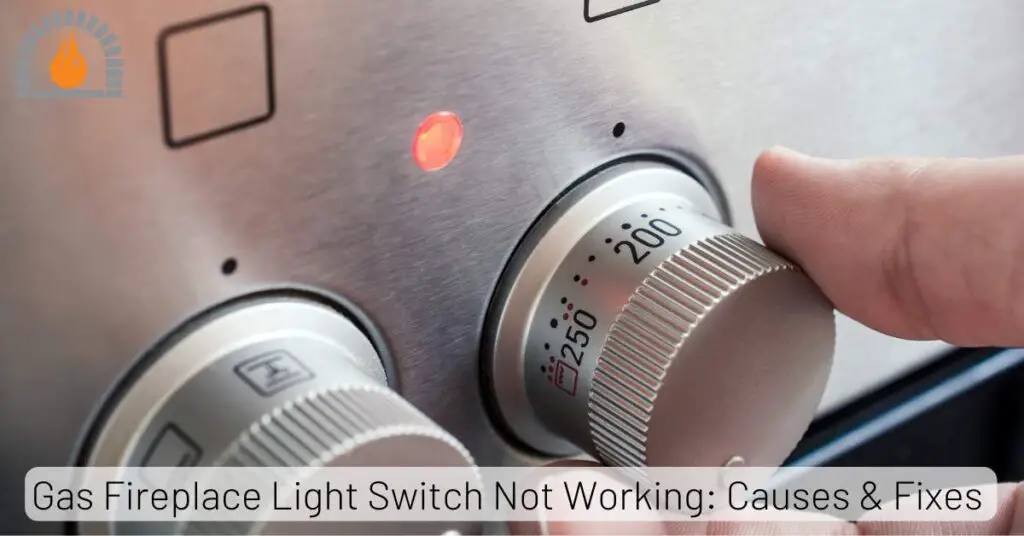When winter’s chill sets in, homeowners face the perennial question: is it cheaper to run gas fireplace or central heat? This comprehensive comparison breaks down the costs, efficiency, and practical considerations to help you make the most economical choice for your home heating needs.
With energy prices fluctuating and environmental concerns growing, understanding the financial implications of your heating options has never been more important.
Key Takeaways
- Gas fireplaces are generally more cost-effective for heating a single room or small area
- Central heating systems typically provide better efficiency for heating an entire home
- The cost difference varies significantly based on local energy prices, home insulation, and climate
- Modern high-efficiency gas fireplaces can rival central heating systems in terms of efficiency
- Strategic use of both heating options (zone heating) can optimize your energy costs
Cost Comparison: Gas Fireplace vs Central Heat
Initial Installation Costs
Before examining operational costs, it’s important to consider the initial investment:
| Heating Option | Average Installation Cost | Lifespan |
|---|---|---|
| Gas Fireplace | $2,000 – $5,000 | 10-20 years |
| Central Heating System | $3,000 – $7,000 | 15-25 years |
Operational Cost Analysis
The operational costs depend on several factors, including energy prices, system efficiency, and usage patterns. Let’s compare the costs:
Energy Consumption
To understand the cost comparison, we need to look at energy consumption:
| Heating Option | Average BTU Output | Average Efficiency | Effective BTU per Unit of Fuel |
|---|---|---|---|
| Gas Fireplace | 20,000-40,000 BTU/hour | 70-85% | 14,000-34,000 BTU/hour |
| Central Heating (Gas Furnace) | 60,000-100,000 BTU/hour | 80-98% | 48,000-98,000 BTU/hour |
Cost Per Hour of Operation
Assuming an average natural gas cost of $1.20 per therm (100,000 BTU):
| Heating Option | Fuel Consumption per Hour | Cost per Hour |
|---|---|---|
| Gas Fireplace (30,000 BTU input, 80% efficient) | 0.3 therms | $0.36 |
| Central Heating (80,000 BTU input, 90% efficient) | 0.8 therms | $0.96 |
At first glance, the gas fireplace appears significantly cheaper to operate. However, this comparison doesn’t account for the fact that central heating warms your entire home, while a gas fireplace typically heats only a single room.
Cost to Heat Equivalent Spaces
To make a fair comparison, let’s calculate the cost to heat a defined space:
| Heating Option | Cost to Heat 300 sq. ft. for 1 Hour | Cost to Heat 300 sq. ft. for 8 Hours |
|---|---|---|
| Gas Fireplace | $0.36 | $2.88 |
| Central Heating (heating entire 2,000 sq. ft. home) | $0.96 (for entire home) | $7.68 (for entire home) |
| Central Heating (proportion for 300 sq. ft.) | $0.14 | $1.12 |
When we proportion the central heating cost to the same space as the gas fireplace, central heating becomes more economical.
Efficiency Analysis
Measuring Heating Efficiency
Heating efficiency is typically measured by Annual Fuel Utilization Efficiency (AFUE) for central heating systems and by similar efficiency ratings for gas fireplaces. This percentage represents how much fuel is converted into usable heat versus how much is lost.
Efficiency Comparison
| Heating Option | Typical Efficiency Range | High-Efficiency Models Available |
|---|---|---|
| Gas Fireplace | 70-85% | Up to 85% |
| Central Heating (Gas Furnace) | 80-98% | Up to 98% |
Central heating systems, particularly modern high-efficiency furnaces, generally outperform gas fireplaces in terms of raw efficiency. However, this doesn’t tell the whole story, as there are other factors to consider.
Zone Heating Benefits
One significant advantage of gas fireplaces is their ability to provide zone heating. Zone heating allows you to heat only the rooms you’re using, rather than the entire house. This can lead to substantial energy savings, especially in larger homes or when household members spend most of their time in a limited area.
According to the U.S. Department of Energy, zone heating can reduce energy consumption by up to 32% compared to heating the entire home uniformly.
Factors Affecting Cost
Home Size and Layout
The size and layout of your home significantly impact which heating option is more cost-effective:
- Smaller Homes: Central heating is generally more efficient overall
- Larger Homes: Gas fireplaces can be cost-effective for zone heating
- Open Floor Plans: Central heat distributes more evenly
- Compartmentalized Layouts: Gas fireplaces can efficiently heat isolated areas
Insulation Quality
The quality of your home’s home insulation affects both heating options but impacts central heating more significantly:
| Insulation Quality | Impact on Central Heating | Impact on Gas Fireplace |
|---|---|---|
| Poor | High heat loss through ducts and walls | Less impact as heat is concentrated in one area |
| Good | Minimal heat loss, efficient operation | Efficient operation with less heat loss |
| Excellent | Maximum efficiency, minimal heat loss | Maximum efficiency, focused heat |
Climate Considerations
Your local climate plays a crucial role in determining the most cost-effective heating option:
| Climate Zone | Recommended Heating Strategy | Rationale |
|---|---|---|
| Mild Winters | Gas fireplace for primary heating | Lower heating demand makes zone heating more efficient |
| Moderate Winters | Combination approach | Use central heat for whole-home comfort and gas fireplace for primary living areas |
| Severe Winters | Central heating for primary use | Extreme cold requires consistent whole-home heating |
Energy Prices
Local energy prices significantly impact the cost comparison:
| Energy Type | Current Average Price | Price Volatility |
|---|---|---|
| Natural Gas | $1.00-$1.50 per therm | Moderate |
| Electricity | $0.10-$0.20 per kWh | Low to Moderate |
| Propane | $2.00-$3.00 per gallon | High |
| Heating Oil | $3.00-$4.00 per gallon | High |
Regional Considerations
Natural Gas Availability
The availability of natural gas in your region affects both options:
- Areas with Natural Gas Lines: Both options are viable, with costs depending on local rates
- Areas Without Natural Gas: Propane gas fireplaces and alternative central heating systems (like heat pumps) become more relevant
Regional Climate Variations
Different regions experience different winter conditions, affecting the optimal heating strategy:
| Region | Typical Winter Conditions | Recommended Heating Approach |
|---|---|---|
| Northeast | Cold, snowy winters | Central heating as primary, gas fireplace for supplemental heat |
| Southeast | Mild winters | Gas fireplace as primary heating source |
| Midwest | Extreme cold temperatures | High-efficiency central heating as primary |
| West | Variable by location | Combination approach based on microclimate |
| Southwest | Mild winters | Gas fireplace for primary heating |
Environmental Impact
Carbon Footprint Comparison
Both heating options have environmental impacts that should be considered, including their carbon footprint:
| Heating Option | CO2 Emissions per Million BTU | Other Environmental Considerations |
|---|---|---|
| Gas Fireplace | 117 pounds | Lower overall emissions if used for zone heating |
| Central Heating (Gas) | 117 pounds | Potentially higher total emissions if heating entire home |
| Central Heating (Electric) | Varies significantly by region | Can be higher or lower than gas depending on electricity source |
Energy Source Considerations
The environmental impact of your heating depends partly on how the energy is produced:
- Natural Gas: Cleaner burning than coal or oil but still a fossil fuel
- Electricity: Impact varies based on generation (renewable vs. fossil fuels)
- Renewable Energy: Both options can be paired with renewable sources for reduced impact
Comfort and Convenience
Heat Distribution
How heat is distributed affects comfort levels:
| Heating Option | Heat Distribution Pattern | Comfort Considerations |
|---|---|---|
| Gas Fireplace | Radiant heat, focused on immediate area | Creates cozy atmosphere but can lead to uneven temperatures |
| Central Heating | Forced air or radiant throughout home | More consistent temperatures but can create drafts |
Control and Convenience
The ease of use and control varies between options:
| Feature | Gas Fireplace | Central Heating |
|---|---|---|
| Speed of Heating | Heats target area quickly | Takes longer to heat entire home |
| Temperature Control | Room-specific control | Whole-home or zone control |
| Programming Options | Limited programming options | Advanced programming and smart thermostats |
| Maintenance Requirements | Annual inspection and cleaning | Regular filter changes and periodic professional maintenance |
Strategic Heating: The Best of Both Worlds
Many homeowners find that a combination approach provides the best balance of comfort and cost-effectiveness:
- Use Central Heating as Primary: Maintain a lower base temperature throughout your home
- Supplement with Gas Fireplace: Use the gas fireplace to increase comfort in primary living areas
- Strategic Thermostat Settings: Lower the thermostat when away or sleeping, using the fireplace for morning and evening comfort
- Smart Home Integration: Connect both systems to smart home systems for optimized control
This hybrid approach can reduce overall heating costs by 10-30% compared to relying solely on central heating.
FAQs: Is it Cheaper to Run Gas Fireplace or Central Hea
Is a gas fireplace cheaper to run than central heating?
For heating a single room, a gas fireplace is typically cheaper to run than central heating. However, for heating an entire home, central heating is generally more cost-effective. The most economical approach often involves using both systems strategically.
Which is more energy-efficient: a gas fireplace or central heating?
Modern central heating systems, particularly high-efficiency furnaces, typically have higher efficiency ratings (80-98%) compared to gas fireplaces (70-85%). However, the effective efficiency depends on how you’re using each system.
Can I use a gas fireplace as my primary heat source?
In smaller homes or mild climates, a gas fireplace can serve as a primary heat source. However, in larger homes or colder climates, it’s generally more effective as a supplemental heat source used in conjunction with central heating.
Final Thoughts
When determining whether it’s cheaper to run a gas fireplace or central heat, there’s no one-size-fits-all answer. The most cost-effective approach depends on your home size, layout, insulation quality, local climate, and energy prices.
For heating a single room or small area, gas fireplaces typically offer better economy. For whole-home heating, central heating systems are generally more efficient and cost-effective. However, a strategic combination of both systems—using central heating for a base temperature and supplementing with a gas fireplace in primary living areas—often provides the optimal balance of comfort and cost savings.
Before making a decision, consider having an energy audit performed on your home to identify specific opportunities for energy efficiency improvements. And remember, investing in proper insulation and weatherization can reduce the costs of both heating options while improving comfort year-round.
Affiliate Disclosure: Fireplaceadviser.com is a participant in the Amazon Services LLC Associates Program. We may earn a commission when you click on certain links on this site and purchase.

Hello!! I am Jamal Khan. I often fix my home electric heaters and gas stove problems and research the common issues in the heating units to improve my knowledge and expertise. The aim of establishing fireplaceadviser.com is to share my expertise and knowledge with my audience.












